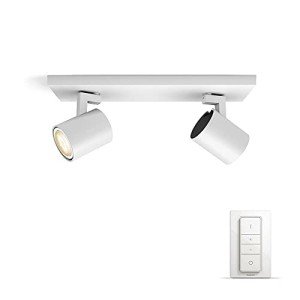Shop Lighting UK: Illuminating the Retail Experience
In the ever-evolving world of retail, the importance of shop lighting can not be overstated. It not only improves the visual appeal of items but also affects client behavior, their state of mind, and the general shopping environment. With advancements in technology and style, shop owners in the UK have a myriad of options to select from when it comes to lighting options. This post will explore the types of lighting available, their advantages, and factors to consider for developing the perfect atmosphere in a retail area.
Importance of Proper Shop Lighting
Effective shop lighting plays a vital role in client experience and can considerably impact sales. Here are some crucial reasons adequate lighting is necessary for retail environments:
- Highlighting Products: Good lighting draws attention to products, making them more enticing to clients.
- Producing Atmosphere: The best lighting can set the mood and stimulate feelings, affecting acquiring choices.
- Enhancing Safety: Well-lit stores are safer, helping clients browse without risk of tripping or accidents.
- Improving Visual Merchandising: Proper lighting can boost displays, making them lively and captivating.
Types of Shop Lighting
Shop owners can choose from numerous kinds of lighting, each serving various purposes, including ambient, job, accent, and decorative lighting. Here's a breakdown of each type:
| Type of Lighting | Description | Best Uses |
|---|---|---|
| Ambient Lighting | Provides overall lighting to the space. | General retail areas like shops and supermarkets. |
| Task Lighting | Concentrate on specific locations to boost exposure for tasks. | Checkout counters and fitting rooms. |
| Accent Lighting | Emphasizes specific products or screens, producing a focal point. | Show cases, art, or promotional products. |
| Decorative Lighting | Adds visual appeal and enhances the total decor. | Chandeliers and special fixtures in high-end stores. |
1. Ambient Lighting
Ambient lighting is the foundational illumination within a shop. It fills the whole space, guaranteeing that customers can see and browse easily. Retailers should consider utilizing LED panels or ceiling-mounted fixtures, as they use energy effectiveness and excellent light distribution.
2. Job Lighting
Job lighting is crucial for locations where specific activities happen, such as checkout counters or workstations. Shop owners can install under-cabinet lighting or track lights to focus lighting on these locations, enhancing the convenience and experience for both staff and customers.
3. Accent Lighting
Accent lighting helps accentuate particular products or functions within the store. This kind of lighting can be accomplished through spotlights, track lights, or tactically positioned wall-mounted fixtures. It is especially efficient for showcasing featured items, advertising display screens, or art work, guiding consumer focus where it's most required.
4. Decorative Lighting
Beyond performance, decorative lighting aspects include design and character to a retail space. Distinct fixtures, such as pendant lights or large chandeliers, can create a memorable atmosphere, particularly in shops or high-end retailers. These statement pieces not only illuminate but likewise improve the shop's branding and visual appeal.
Choosing the Right Lighting for Your Shop
When choosing lighting for a retail environment, shop owners must think about the following aspects:
- Store Type: Different types of retail need varying lighting solutions. A jewelry store might need softer, more concentrated lights, while a supermarket may need brighter ambient lighting.
- Color Temperature: The color of light can impact the understanding of items. Warm lights (under 3000K) produce a comfortable feel, while cool lights (above 3000K) can make an area feel more contemporary.
- Energy Efficiency: The use of LED lighting not just saves energy however likewise reduces expenses in time.
- Flexibility: Install dimmers or adjustable fixtures to adjust lighting for different occasions or seasonal changes.
The Future of Shop Lighting
As technology progresses, shop lighting is becoming progressively sophisticated. Here are some patterns shaping the future of retail lighting in the UK:
- Smart Lighting Solutions: Integrated innovation permits for remote control and automation of lighting systems by means of mobile phones or home assistants.
- Sustainable Lighting: There is a growing focus on eco-friendly services, with retailers deciding for items that reduce ecological impact.
- Focal Point Lighting: Retailers are significantly using lighting to create particular centerpieces that direct consumer traffic and enhance product display screens.
FAQs about Shop Lighting in the UK
Q: What is the finest type of lighting for a clothing store?A: A combination of
ambient and accent lighting is normally best. Ambient lighting is required for overall exposure, while accent lighting can assist highlight essential pieces or collections. Q: How can I make my shop lighting more energy-efficient? A: Consider using LED lights, installing movement sensing units, or integrating
dimmers. This reduces energy consumption and costs in the long run. Q: Should I use natural light in my shop?A: Yes, using natural light can improve customer experience whileminimizing energy expenses. However, it is important to balance natural light with synthetic lighting, especially on cloudy days. Q: How often need to I replace my shop's lighting fixtures? lightingandlamps : This depends on the kind of fixtures utilized. LED lights can last as much as 25,000 hours, while traditional bulbs
may need to be replaced more often. Regular maintenance checks are advised. In an increasingly competitive retail environment, shop lighting plays an invaluable function in shaping customer experiences and driving sales. Sellers in the UK have a wide variety of choices and technologies at their disposal to produce the best atmosphere. By comprehending the value of the various kinds of lighting and how to execute them effectively, shop owners can enhance their area, making shopping more enjoyable for consumers while increasing their bottom line.

